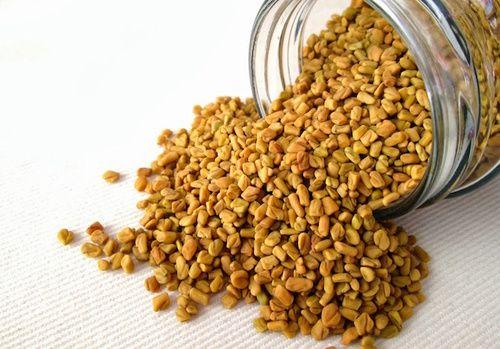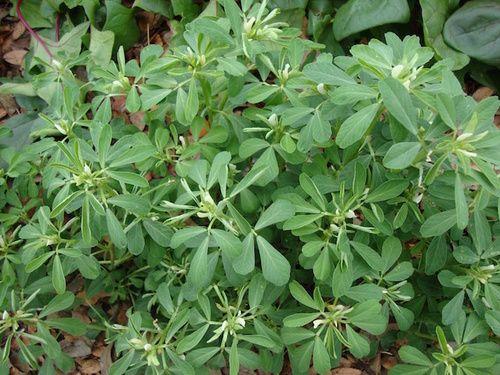Fenugreek flour it is obtained from a legume, the Trigonella foenum graecum. Used both for food and for cosmetic use, fenugreek flour is an excellent tonic and tonic. Let's find out better.
> 1. How fenugreek flour is made
> 2. Properties and use of fenugreek flour
> 3. Products based on fenugreek flour
> 4. A recipe up your sleeve

How fenugreek flour is made
Fenugreek, original name Trigonella foenum graecum, is a herbaceous plant belonging to the legume family which also includes licorice, beans and soya.
The word trigonella derives from the Greek “trigonos” which means triangle, due to the arrangement of the leaves in three by three or for the shape of the seeds. Widespread throughout the Mediterranean area, the fenugreek plant was also used for feeding livestock.
Once fully ripe, the fruits are dried in the open air and subjected to beating and husking. Fenugreek flour is obtained from the seeds contained in them and is of a reddish or gray, with yellow hues.
Properties and use of fenugreek flour
Fenugreek seeds and leaves are rich in steroidal saponins, phytoestrogens, alkaloids (trigonellin), vitamins, lysine, tryptophan, mineral salts (iron, manganese, calcium, copper and phosphorus), coumarins, essential oil, flavonoids, lipids, proteins, mucilages, B vitamins, such as B6 , thiamine and riboflavin.
Fenugreek has been known since ancient times to be an excellent tonic and tonic, useful during convalescence, in states of fatigue and in anemic ones.
Fenugreek flour promotes muscle growth naturally and reduces cholesterol levels and blood sugar. It is however not recommended during pregnancy, to avoid unwanted increases in uterine contractility.
Fenugreek flour products can be both cosmetic and food: its benefits are found both internally and externally.
You can learn more about the properties, use and contraindications of fenugreek

Fenugreek flour products
With fenugreek flour you can make many beauty products. In cosmetics, fenugreek is one of the most used herbs for hair treatment, for example.
Fenugreek powder, which contains phytoestrogens, is particularly used to combat excessive hair loss and to make hair silky and full-bodied. In modern phytocosmetics, fenugreek is also contained in firming, emollient, anti-stretch mark and anti-wrinkle products. Being rich in phytoestrogens, fenugreek can do increase the size of the sone.
Fenugreek flour used as a poultice is emollient and decongestant and prescribed to fight boils, abscesses and ulcers.
In the food sector, fenugreek flour is used to make bread, for instance. In Africa and India it is also used to make sauces and seasonings and as an ingredient in the composition of spice mix. The flour can be found in ethnic shops or in outlets specializing in natural and organic food products.
A recipe up your sleeve
Here is a cosmetic recipe for breast feeding, rich in phytohormones that are used to firm and make the skin more elastic and firm.
Ingredients:
- fenugreek 30 grams,
- green clay 20 grams,
- fennel essential oil 20 drops,
- water
Procedure:
Pour all the ingredients into a bowl and mix until the dough is smooth and homogeneous. Spread the mixture on the breasts, then wrapping them with a transparent film. Leave to absorb for about a quarter of an hour and rinse.
Fenugreek among the spices of Ayurvedic nutrition
| Thenational.net


























